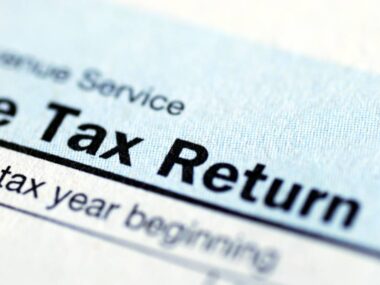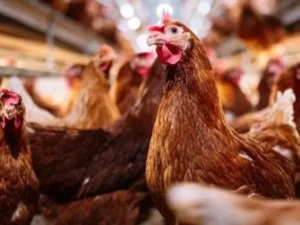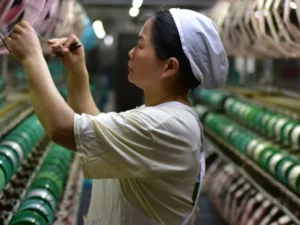Gold prices have surged to a new record as investors worry about the economic impact of the US-China trade war.
Spot gold peaked at $3,357.40 (£2,540) per ounce on Wednesday before retreating slightly. It has risen by approximately one-third since the start of the year.
This increase follows comments from the Federal Reserve Chair, Jerome Powell, who warned that President Trump’s tariff policies could lead to slower economic growth, higher prices, and increased unemployment risks.
Gold is traditionally seen as a safe-haven asset during times of economic instability. Powell’s remarks, made at the Economic Club of Chicago, echoed concerns that recent tariff hikes could slow US economic growth and drive up consumer prices.
These comments come amid global financial market turmoil, with investors reacting to the implementation of new import taxes and the ongoing US-China trade conflict.
According to Stephen Innes from SPI Asset Management, gold is currently in “full lifeboat mode,” becoming “the most crowded trade on the planet.”
“The dollar is struggling under the weight of trade-policy uncertainty, and portfolio managers are losing confidence in politically driven investments,” he added.
Some analysts have compared this year’s gold rally to the surge during the Iranian Revolution in the late 1970s, when gold prices increased by nearly 120% from November 1979 to January 1980.
Gold surpassed $3,000 per ounce for the first time last month as concerns about the global trade war intensified.
Jesper Koll from Monex Group stated that investors are turning to gold as a hedge against both inflation and government mismanagement.
“Everyone is looking for ‘real’ assets. It’s increasingly clear that President Trump’s aggressive policy-making will not change,” Koll said.
The tariffs imposed by the Trump administration—taxes on businesses importing goods from overseas—have stoked fears of inflation, driving investors toward safe-haven assets like gold.
Since returning to the White House in January, Trump has implemented tariffs of up to 145% on Chinese goods, with China retaliating with a 125% tariff on US imports. There’s also uncertainty about the potential implementation of tariffs on other countries, which have been temporarily paused for 90 days.
The Trump administration argues that these measures will boost US manufacturing, create jobs, and generate significant tax revenue.











